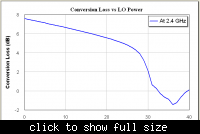rakesh228
Junior Member level 3
in case of FET single resistive mixer, how the RF power and conversion losses related?
( why every one using LO power in positive dBm while RF power in negative dbm and vice versa....??? is there any reason to that?)
( why every one using LO power in positive dBm while RF power in negative dbm and vice versa....??? is there any reason to that?)
